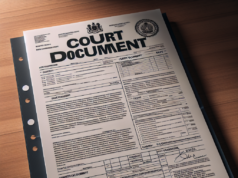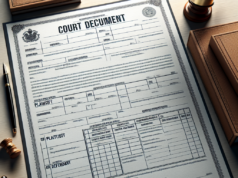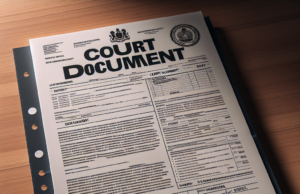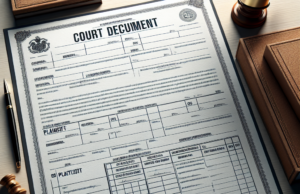
Getting a divorce can be confusing and a bit challenging; however with the help of a lawyer and a clear understanding of the 12 divorce steps, a divorce can be obtained in a quick and efficient manner.
1. Separation
After a couple has decided that they can no longer stay married, they will undergo a separation. Often a separation involves an individual moving out of the home, or living in a separate room in the house.
The date of the separation is an important date to keep track of, so make sure the date is properly documented.
2. File Dissolution Petition
A petition for dissolution must be filed with the court. This petition is known as legal form FL-100, and can be filed with local family court; you must file the petition with a family court in your jurisdiction. The filing fee for this form is around $350. After this is filed, a summons must be issued by the court. This will appear as legal form FL-110.
3. Service of Papers
This is the process in the divorce steps that delivers the papers to the other individual involved in the divorce. The papers being delivered are the summons from the court approving the petition.
These papers can be delivered by any sound adult other than the individual whom filed for divorce. Generally a lawyer completes this step, but it can be completed by a friend or a family member.
The individual servicing the papers must have filed a FL-115 form, which is a proof of service form. Upon receiving the papers, the individual will then fill out a FL-117 form, which is the notice and acknowledgment of receipt.
This form ensures that the individual received the summons. The FL-117 will then be mailed to the individual who petitioned for the divorce or their lawyer.
4. Response or Default
The served individual has 30 days to file their response with the court. The response is filed by using the FL-120 form. The response filing fee is around $350, and is to be mailed to the individual who petitioned for the court as well as submitted to the court.
If both parties of the divorce are in agreement, they may choose to file for a default, which is legal form FL-165.
5. Preliminary Disclosures
Both parties must complete this section of the divorce steps in a timely manner. Each party will be asked to uncover information about their assets and debts. The forms to be filed are FL-142 and FL-140.
6. Income and Expense Declaration
This is more or less a snap shot of the each parties income over the last 12 months. This will be filed on the FL-150 form.
7. Co-parent classes
This step is only necessary if there are children involved; in the case that there are children involved, parents will have to attend a three hour class about parenting.
8. Status Conference
Status conferences are scheduled by the court and will occur every four months to ensure that the case is progressing.
9. Motion and Orders to Show Cause
Motions and orders must be sent to discuss money and custody issues. It is beneficial to include supporting declarations on these topics when filing for motions and orders. The forms to be filed for this divorce steps are FL-300 and FL-301.
10. Final Disclosures
If the parties of the divorce cannot agree to a settlement, a second disclosure may take place for the court to further look at the issues involving finances and custody.
11. Agreement or Marital Settlement Agreement
Written agreements will be created dividing any necessary assets and finances; both parties will be in agreement to these written stipulations.
12. Judgment
The Judge of the family court will sign a judgment form, FL-180, and a notice of entry of judgment, FL-190, will then be served to both parties. After these documents are received, the divorce is final.



























